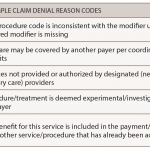In January 2018, a number of medical groups, including the ACR and the American Medical Association (AMA), issued a consensus statement on principles to guide the reform of utilization management, such as by more selective application.
The ACR has joined with 13 other national medical specialty groups in the Regulatory Relief Coalition to endorse H.R. 3173, the Improving Seniors’ Timely Access to Care Act of 2021, reintroduced in Congress in May by Rep. Suzan DelBene (D-Wash.) and others. The bill would reform and streamline requirements for prior authorization for Medicare Advantage plans, making it speedier and more transparent, and establish a national electronic prior authorization system that insurers would be required to adopt. Medicare Advantage is viewed as a place to start building a coalition of advocates to tackle other insurance sectors as well.
State legislatures are another important target for advocacy against the disruptions caused by prior authorization and similar measures. In March this year, Nebraska passed a law restricting step therapy, joining two dozen other states that have already done so.
Dr. Feldman recommends the CSRO map tool to see the status of legislation, active or enacted, in each state regarding various utilization management tools, including step therapy, non-medical switching, prior authorization and PBM transparency.
Let the Physician & Patient Decide
“Our position is that we should let the patient and provider decide what’s the best treatment for them—period,” says Dr. Phillips. “There are any number of idiosyncrasies to individual cases that could shape the doctor’s judgment on the right answer for a particular patient.”
The ACR offers practice management resources to help members deal with prior authorization and other insurance related issues. Send an email to [email protected], or visit http://www.ACRInsuranceAdvocacy.org.
PRIOR AUTHORIZATION: 20 BEST PRACTICES
If practice managers have a mantra, it’s document, document, document:
- Document in the medical record what medications have been tried and failed, with dates. If this can be carried forward in subsequent notes, it saves a lot of time for the person preparing the prior authorization request or letter of appeal. It also helps to know why a medication failed to help the patient (e.g., increased liver enzymes, development of a new rash).
- Know your state’s prior authorization laws.
- Have a process for prior approvals, and review it regularly. The process may look different in every practice and will depend on practice size, number of physicians, staff, etc. Having a process gives staff a plan of action for documentation and follow-up. Regular review of the process allows for changing payer protocols and staff changes, and can keep things as lean and proficient as possible.
- Designate a person to oversee the prior authorization process. This person will provide oversight for submissions, turnaround times for staff and payers, policy changes, etc.
- Be sure the process is known to all staff. How is an authorization request initiated? Who gets the assignment? Is there an office policy for when the initial submission by staff must be accomplished (e.g., within 24–48 hours of the prescription being issued)? Does your practice have a follow-up policy? What happens if the authorization is denied? If it’s approved, who receives the approval and what do they do with it? How is the patient notified and in what time frame?
- Know the requirements of your top payers, their top formulary products and the fastest way to submit requests. Does the payer prefer to receive prior authorization requests via eFax, paper fax, phone call or other method? What is the process to request nonpreferred drugs or a clinical review?
- Track and follow up on prior authorization requests. Maintain a master list that all staff can reference to obtain the status of a request.
- Keep the patient in the loop. Make sure the patient is aware of your prior authorization process and keep them updated with information about coverage and denials, copay programs and out-of-pocket costs.
- Document and record in your patient’s chart the authorization details including:
- File a copy of the approval letter with the reference number, date and time, and identity of the person who issued the authorization;
- Date range for the approval;
- Amount approved within the timeframe, such as Drug X—300 mg every six weeks.
- Understand the process to extend or obtain a new authorization. Most payers allow you to renew 30 days out.
When a denial is received:
- Review the practice process policy to make sure denials are not inadvertently being created due to a process disconnect.
- Review the denial: What is the reason given? Does it make sense?
- Review the prior authorization submission to ensure the correct information was provided.
- Does the medical record documentation support the request?
- If the denial is for clinical reasons or due to a try-and-fail policy, provide that information to the rheumatologist or prescriber. Would they like to proceed with an appeal or change to a preferred product (give them the product options)?
“If authorization is denied, appeal,” says Ms. Zlatkus. “Most appeals are approved.” If the decision is made to appeal the denial:
- Clarify how the payer prefers to receive an appeal.
- Include measurement details in an appeal letter. Example: “The patient’s Clinical Disease Activity Index (CDAI) is 24, representing high disease activity.”
- Include any issues with activities of daily living. Be specific.
- If you have pictures of the patient’s condition (e.g., swollen joint[s], psoriasis, rash), include them in the appeal. Pictures go a long way.
- Embed in the body of the letter any literature review that helps bolster your position for going outside the tier system or for off-label uses. “We have used package inserts for FDA approval definition, white papers, peer reviewed articles, etc.,” says Ms. Bonney, “but our best success has always been having our physician conduct a phone discussion with the medical and/ or pharmacy director within the plan. These calls typically last less than five minutes and have an overwhelmingly positive outcome for the patient.”
“I have let the insurance companies know I am cc’ing the state attorney’s office and the state’s insurance commissioner,” says Ms. Ruffing. “Make note of the addresses for the offices in your state.”


